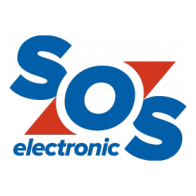Hello,
I’m trying to do my first electronic project and I’m coming with not a lot of knowledge, so first of all, excuse me if I asking questions that could seems stupid to you.
My plan is to delegate the print and the assembly of the PCB to JLCPCB (seems to be low cost). I’m delegating the assembly to them because I don’t have the tools and experience to solder small components.
I would like to have a PCB on which I can plug some component. I’m not sure what are the best practice for that:
- Is it correct to create one footprint per sensor even if it needs 2 connector to be plugged in ?
- Is it ok to draw the outline of the sensor on the fabrication layer ? Or should I draw the outline of each connector separately ?
- If I can create one footprint for the whole sensor (containing the 2 female headers), won’t it be a problem to describe what must be assembled by the manufacturer ?
- I read that the anchor of the footprint must at the center, but some others says that the anchor must be at the pin 1 to make it clear for the manufacturer, what do you think about that ? In the case of a footprint that will need 2 connectors, what would you recommand ?
- I read that the fabrication layer is used to explain the manufacturer what is going where, but If I draw let’s say a big rectangle where the sensor will be, won’t it be an issue for them to assemble the 2 connectors ? (how will they know that I need 2 connectors for the same footprint).
The manufacturer is apparently needing a BOM and a CPL, I’m not sure how to make things clear for them.
Again, sorry if my questions seems obvious, I’m trying to learn but It’s not easy by doing that alone.
Thank you in advance 



